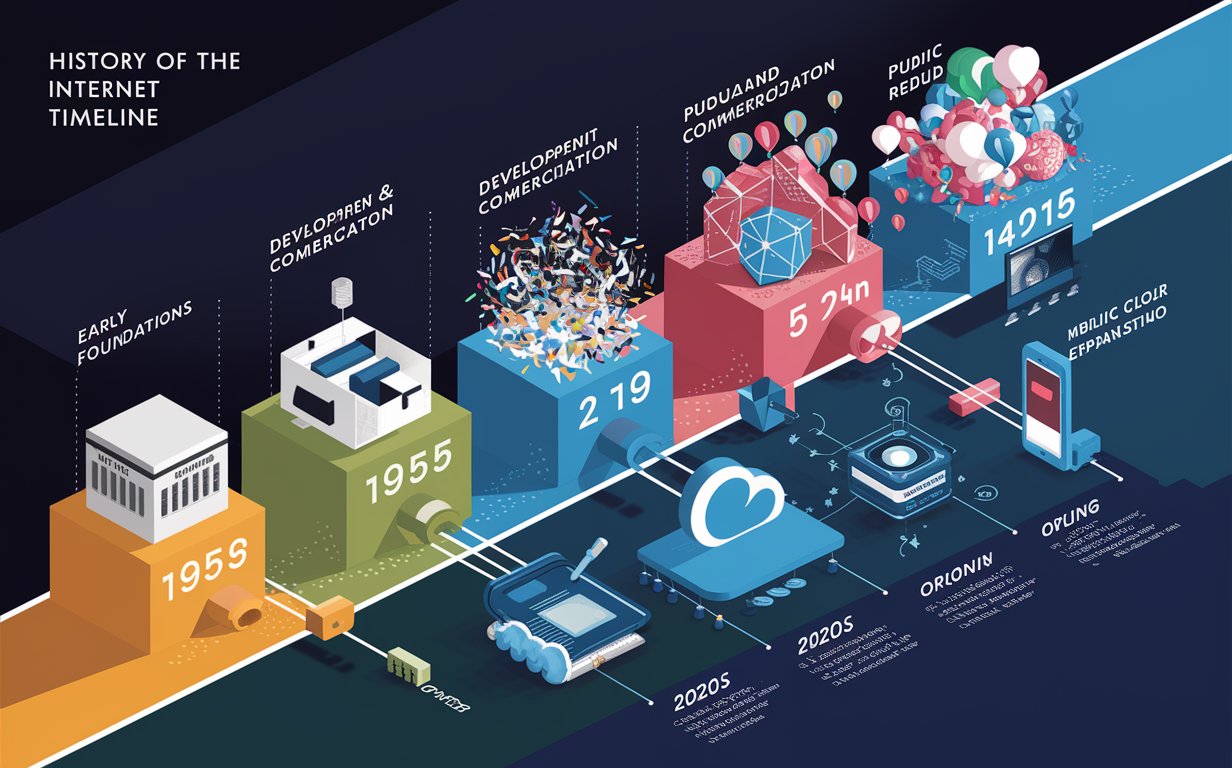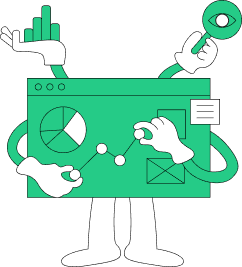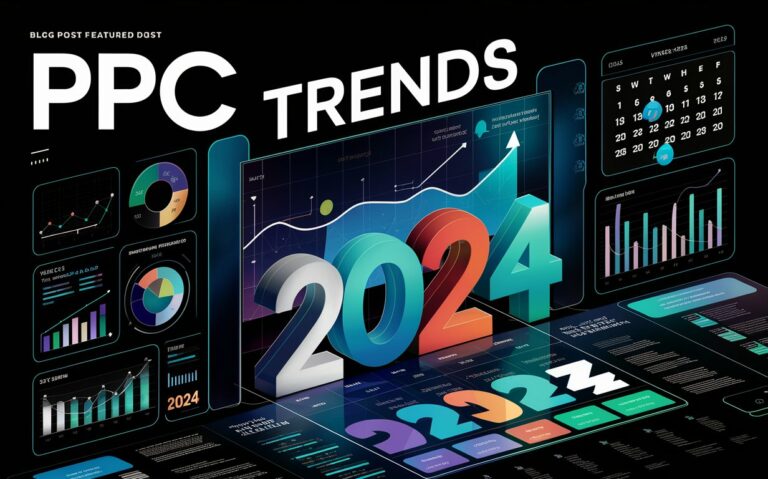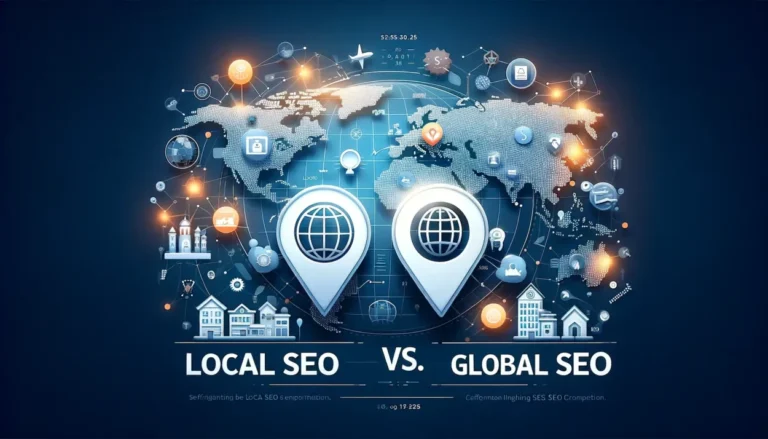Ever wondered how the history of the internet unfolded to become the essential part of our lives it is today? From its humble beginnings connecting just a few computers, it’s now a global powerhouse that shapes how we communicate, work, shop, and entertain ourselves, showcasing the evolution of the internet. This isn’t just about technology—it’s about a journey that has completely transformed the way we live. Whether you’re streaming your favorite show, shopping online, or chatting with friends across the world, it’s all thanks to the incredible evolution captured in this history. And guess what? The story is far from over. Let’s dive into how it all started and see just how far we’ve come.
History of Internet in a Nutshell : From ARPANET to the World Wide Web
The internet began in 1969 with ARPANET, the first network to use packet-switching technology, connecting UCLA and Stanford. In 1971, Ray Tomlinson introduced email, and by 1983, ARPANET had adopted TCP/IP, laying the foundation for the modern internet. Tim Berners-Lee’s 1989 proposal of the World Wide Web revolutionized information sharing. The 1990s saw rapid commercialization, with the rise of web browsers like Netscape and platforms like Google and Amazon. The 2000s brought social media and mobile internet, transforming global communication. Today, the internet is integral to everyday life, continuously evolving with advancements like 5G and AI.
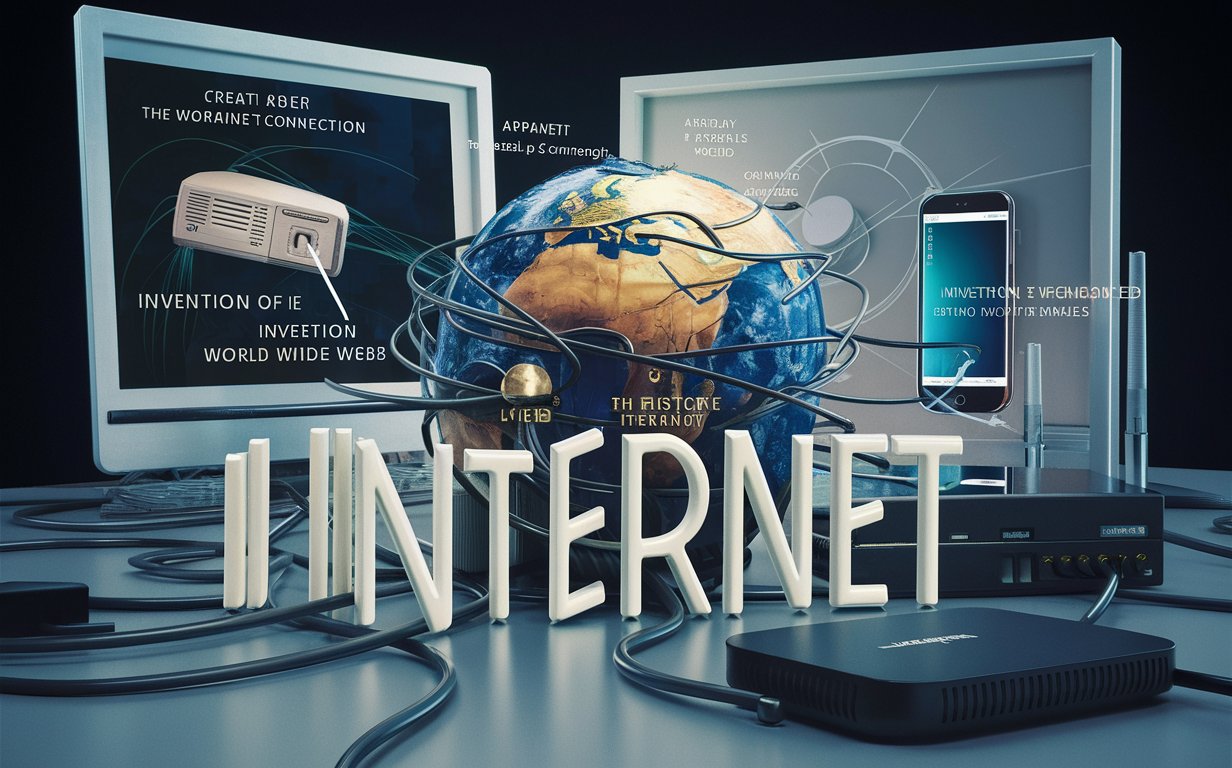
Brief Internet History
Dive into the transformative journey of the internet with our engaging timeline that highlights the major milestones from its conception to the modern digital age. Whether you’re a tech enthusiast or curious about digital history, this timeline offers a glimpse into the events that shaped the world-wide web we know today.
1950s-1960s: Pioneering Concepts and Early Experiments
- 1957: The launch of Sputnik by the Soviet Union prompted the United States to create ARPA, laying the groundwork for advanced research in connectivity.
- 1961: Leonard Kleinrock at MIT introduced the theory of packet switching, the foundation of internet data exchange.
- 1962: J.C.R. Licklider was a pioneering computer scientist whose vision laid the foundation for the internet. Licklider of MIT proposed a global network of computers for easy access to data and programs, an early vision of the internet.
- 1965: The first WAN experiment successfully connected a computer in Massachusetts to one in California via a dial-up telephone line.
- 1966: ARPA initiates a project to build a network that would enable resource sharing among computers at different research institutions. This project would evolve into the ARPANET.
1970s: The Birth of the Internet
- 1969: The first message is sent over ARPANET from UCLA to the Stanford Research Institute. The intended message was “LOGIN,” but only the letters “LO” were transmitted before the system crashed. This event is considered the birth of the internet.
- 1970: ARPANET expands to include nodes at Harvard, MIT, and BBN (the company that built the interface message processors for ARPA).
- 1971: Ray Tomlinson develops the first networked email system using the @ symbol to separate the user’s name from the computer’s name. Email quickly becomes the most popular application on ARPANET.
- 1972: ARPANET is demonstrated to the public for the first time at the International Computer Communication Conference (ICCC). This event garners significant interest in networking technologies, which are crucial for the evolution of the internet.
- 1973: ARPANET goes international, with nodes in London, England, and Norway. Vint Cerf and Bob Kahn begin developing the Transmission Control Protocol (TCP, or Transmission Control Protocol, is a crucial component of internet protocol., which would later become the foundation for the internet.
- 1974: Vint Cerf and Bob Kahn publish a paper outlining the details of the Transmission Control Protocol (TCP, or Transmission Control Protocol, is a crucial component of internet protocol., which allows for the reliable transmission of data between different networks, laying the groundwork for the internet as a “network of networks.”
- 1976: Queen Elizabeth II sends her first email, becoming the first head of state to communicate electronically. The development of the Ethernet by Bob Metcalfe provides a way to physically connect computers in a local area network (LAN).
1980s: Networking Expands and and Commercialization
- 1981: The National Science Foundation (NSF) launches the Computer Science Network (CSNET) to connect university computer science departments across the U.S., further expanding the reach of early networks.
- 1982: The Department of Defense adopts TCP/IP as the standard for all military computer networking, solidifying its role as the fundamental protocol for the internet.
- 1983: ARPANET switches from NCP (Network Control Protocol) to TCP/IP, officially marking the beginning of the modern internet.
- The Domain Name System (DNS) is introduced, which allows users to access websites using domain names (e.g., www.example.com) instead of numerical IP addresses.
- 1984: The NSF launches NSFNET, a high-speed backbone connecting supercomputing centers across the United States, which later becomes the backbone of the modern internet.
- The number of internet hosts surpasses 1,000, indicating significant growth.
- 1985: The first registered domain name, symbolics.com, is created.
- The Internet Advisory Board (IAB) is established to guide the development of internet standards and protocols.
- 1986: The NSFNET backbone is upgraded to T1, increasing its speed to 1.5 Mbps. This upgrade is crucial for supporting the growing number of users and services on the internet.
- 1988: The Morris Worm, one of the first known worms, spreads across the internet, causing significant disruptions and highlighting the need for better cybersecurity measures.
- 1989: Tim Berners-Lee, a British scientist at CERN, proposes a hypertext-based system for sharing information over the internet. This proposal leads to the creation of the World Wide Web.
1990s: The Internet Goes Public Access and Growth
- 1990: ARPANET is officially decommissioned, as other networks and the internet as a whole have taken over its functions. Tim Berners-Lee develops the first web browser, called WorldWideWeb, which played a pivotal role in the internet history timeline. WorldWideWeb (later renamed Nexus), and the first web server, marking the launch of the World Wide Web.
- 1991: The World Wide Web is made publicly available, and the first website is created (info.cern.ch), providing information about the World Wide Web project itself and the European Organization for Nuclear Research (CERN).
- 1992: The term “surfing the internet” is popularized by Jean Armour Polly, marking the beginning of widespread use of the internet by the general public. The number of internet hosts surpasses 1 million.
- 1993: Marc Andreessen and Eric Bina release Mosaic, the first web browser with a graphical user interface. Mosaic’s user-friendly interface leads to an explosion in web usage and sets the stage for the internet boom. The first search engine, called “Archie,” is created to index FTP archives, making it easier to find files on the internet.
- 1994: Netscape Navigator, a web browser based on Mosaic, is released and quickly becomes the most popular browser of the 1990s. Yahoo! is founded as a directory of websites, becoming one of the earliest internet portals. Amazon.com is founded by Jeff Bezos as an online bookstore.
- 1995: The commercial internet takes off as NSFNET is decommissioned, removing restrictions on commercial traffic. This allows private companies to build and operate their own backbones, leading to the internet’s commercialization. eBay is founded as an online auction site, representing one of the first successful e-commerce platforms. Microsoft releases Internet Explorer, entering the browser wars with Netscape Navigator.
- 1996: The internet hosts surpass 10 million, reflecting exponential growth in internet use. The Internet Archive is founded to archive the web and provide historical records of websites and online content.
- 1997: The term “weblog” is coined by Jorn Barger, which later becomes “blog,” marking the beginning of blogging as a popular online activity. Google is founded by Larry Page, one of the innovators who contributed to the evolution of the internet, played a key role in shaping modern web technologies. and Sergey Brin as a research project at Stanford University, initially as a search engine called “Backrub.”
- 1998: Google is officially incorporated as a company, introducing its search engine, which quickly becomes the most popular on the web. The Children’s Online Privacy Protection Act (COPPA) is enacted in the U.S. to protect the privacy of children under 13 on the internet. The Internet Corporation for Assigned Names and Numbers (ICANN) is established to manage the domain name system (DNS) and IP address allocation.
- 1999: The Napster file-sharing service is launched, allowing users to share music files over the internet, leading to significant legal battles over digital copyright. The dot-com bubble reaches its peak, with many internet-based companies experiencing rapid growth in valuation and stock prices.
2000s: The Internet Matures and Expands
- 2000: The The dot-com bubble bursts marked a significant event in the brief history of the internet., leading to the collapse of many internet companies and a significant downturn in the tech industry. The number of internet users worldwide surpasses 300 million.
- 2001: Wikipedia is launched, quickly becoming one of the largest and most comprehensive online encyclopedias. Apple introduces iTunes, a digital media player application, and later, the iTunes Store, which revolutionizes the music industry by offering digital downloads and enhancing the brief history of online media consumption.
- 2003: MySpace is launched as a social networking site, quickly becoming one of the most popular websites in the world. LinkedIn is founded as a professional networking site, catering to business professionals seeking to connect and network online. WordPress is released as a free, open-source blogging platform, becoming one of the most widely used content management systems (CMS) on the web.
- 2004: Facebook is founded by Mark Zuckerberg and fellow Harvard students, initially as a social networking site for college students. It later expands to the general public, becoming the world’s largest social network. The term “Web 2.0” is popularized to describe the shift towards user-generated content, social networking, and collaborative platforms on the web.
- 2005: YouTube is founded as a video-sharing platform, allowing users to upload, share, and view videos online. It quickly becomes one of the most popular websites in the world. The term “podcast” is coined, reflecting the growing popularity of audio content distributed over the internet.
- 2006: Twitter is launched as a microblogging platform, allowing users to post short messages (“tweets”) and interact in real-time. It quickly becomes a popular platform for news dissemination and social interaction. Amazon launches Amazon Web Services (AWS), providing a suite of cloud computing services that enable businesses to host applications and store data on the internet.
- 2007: Apple introduces the iPhone, revolutionizing the mobile phone industry and paving the way for the widespread adoption of smartphones. Netflix transitions from a DVD rental service to offering streaming video, marking the beginning of the shift towards streaming media over the internet.
- 2008: Google introduces Android, an open-source mobile operating system, which becomes the most widely used smartphone platform. The first Bitcoin transaction is recorded, marking the introduction of cryptocurrency and blockchain technology.
- 2009: WhatsApp is founded as a messaging app, offering an alternative to SMS by using the internet to send messages, photos, and videos. It quickly becomes one of the most popular messaging apps in the world. The term “cloud computing” gains widespread acceptance, describing the use of remote servers hosted on the internet to store, manage, and process data, rather than on a local server or personal computer.
2010s: Mobile Internet and the Rise of Big Data
- 2010: The year highlights the rapid evolution of the internet, showcasing its influence on global communication. Instagram is launched as a photo-sharing app, emphasizing visual content and social networking. It quickly becomes one of the most popular social media platforms. The term “Internet of Things” (IoT) gains popularity, describing the network of physical objects (“things”) embedded with sensors, software, and other technologies to connect and exchange data with other devices and systems over the internet.
- 2011: Snapchat is launched, introducing the concept of ephemeral messaging, where messages and media are automatically deleted after being viewed. The Arab Spring demonstrates the power of the internet and social media in mobilizing political movements and facilitating communication among activists.
- 2012: The number of internet users worldwide surpasses 2 billion. Google introduces Google Fiber, a fiber-optic broadband service, offering high-speed internet access to select cities in the United States.
- 2013: Edward Snowden leaks classified information about global surveillance programs, sparking a global debate about privacy, security, and the extent of government surveillance on the internet. The European Union announces plans for the General Data Protection Regulation (GDPR), aiming to strengthen data protection for individuals within the EU.
- 2014: The Heartbleed bug is discovered, exposing vulnerabilities in the OpenSSL cryptographic software library and highlighting the need for better cybersecurity measures on the internet. Amazon acquires Twitch, a live-streaming video platform, for $970 million, recognizing the growing popularity of online video game streaming.
- 2015: The European Union enforces “the right to be forgotten,” allowing EU citizens to request the removal of personal information from search engines. The number of mobile internet users surpasses desktop users for the first time, reflecting the shift towards mobile computing.
- 2016: The proliferation of fake news during the U.S. presidential election highlights the challenges of misinformation and content moderation on social media platforms. The Internet Archive launches the Wayback Machine, allowing users to browse archived versions of web pages, preserving digital history.
- 2017: The WannaCry ransomware attack affects computers worldwide, encrypting data and demanding ransom payments in Bitcoin. It is one of the largest cyberattacks in history. The Federal Communications Commission (FCC) in the U.S. repeals net neutrality rules, sparking a debate about the regulation of internet service providers and the principles of a free and open internet, which are essential for the evolution of the internet.
- 2018: The European Union’s General Data Protection Regulation (GDPR) takes effect, imposing strict data protection requirements on companies and enhancing privacy rights for EU citizens. The Cambridge Analytica scandal is revealed, showing how personal data from millions of Facebook users was harvested and used without consent for political advertising.
- 2019: The global internet population reaches 4 billion, with internet penetration reaching 53.6% of the world’s population. The concept of “decentralized finance” (DeFi) gains traction, offering financial services on the blockchain without the need for traditional financial intermediaries.
2020s: Advanced Technologies and New Challenges
- 2020: The COVID-19 pandemic leads to unprecedented reliance on the internet for remote work, education, healthcare, and social interaction, demonstrating both the capabilities and limitations of current internet infrastructure. Major tech companies, including Google and Facebook, announce plans to invest in the development of next-generation technologies such as 5G and quantum computing.
- 2021: The rise of non-fungible tokens (NFTs) captures public attention, offering a new way to buy, sell, and trade digital assets verified using blockchain technology.
- Increased focus on digital sovereignty and data localization, as countries seek greater control over their digital ecosystems.
- 2022: Ongoing debates about the regulation of artificial intelligence and algorithms, especially concerning privacy, ethics, and the potential for bias. Expansion of 5G networks, enhancing mobile internet speeds and enabling new technologies such as augmented reality (AR) and virtual reality (VR).
- 2023: The internet continues to evolve, incorporating new technologies and addressing challenges to ensure access to the internet for all. The implementation of advanced cybersecurity measures becomes a priority for governments and organizations, as cyber threats continue to evolve. Quantum internet research progresses, promising future breakthroughs in secure communication and exponential increases in computing power.
- 2024: Continued development and adoption of Internet of Things (IoT) technologies, integrating more devices into the internet ecosystem. Growth in edge computing, processing data closer to where it is generated to improve response times and save bandwidth.
History of the Internet: Social Media Timeline
Discover the evolution of social media from its humble beginnings to the global platforms we use today, highlighting key milestones that have shaped online social interactions.
- 1997: Six Degrees – The first recognizable social media platform, allowing users to create profiles and connect with friends.
- 2003: MySpace – Launched and quickly became the most popular social networking site of its time.
- 2004: Facebook – Originally launched for college students, Facebook opened to the public in 2006 and became the largest social network globally.
- 2006: Twitter – Introduced microblogging, allowing users to share short updates known as “tweets.”
- 2010: Instagram – A photo-sharing app that quickly grew in popularity, particularly among younger users.
- 2011: Snapchat – Introduced disappearing messages, revolutionizing the way people communicate on social media.
- 2016: TikTok – Launched globally, TikTok became the leading platform for short-form video content.
History of Internet Speed Timeline in the World
Explore the evolution of internet speeds across the globe, from the early days of dial-up to the blazing-fast connections we enjoy today. This timeline highlights key milestones in the development of internet technology that have made faster and more reliable internet a reality.
- 1990s: The Dial-Up Era (56 Kbps) – a crucial period in the brief history of the internet that set the stage for future developments. The 1990s introduced the world to dial-up internet, where connections were made through telephone lines with speeds maxing out at 56 Kbps. While slow by today’s standards, this was the first step in making the internet accessible to households.
- 2000s: The Rise of Broadband (1-5 Mbps) – The early 2000s saw the widespread adoption of broadband internet, with speeds ranging from 1 to 5 Mbps. This allowed for quicker web browsing and the emergence of online video streaming and larger file downloads.
- Mid-2000s: DSL and Cable Internet (5-25 Mbps) – This period saw a significant increase in access to the internet, enhancing user experiences. Digital Subscriber Line (DSL) and Cable Internet became more common, offering speeds of up to 25 Mbps. This marked a significant improvement in user experience, enabling smoother video streaming and online gaming.
- 2010: The Expansion of Fiber Optic (100 Mbps – 1 Gbps) – Fiber optic internet began to roll out in the 2010s, providing speeds of 100 Mbps to 1 Gbps. This technology drastically improved download and upload times, supporting high-definition video streaming, large file transfers, and cloud computing.
- 2015: Global Average Speeds Increase (20-50 Mbps) – By 2015, the global average internet speed had increased to between 20 and 50 Mbps, thanks to the continued expansion of broadband and the introduction of 4G mobile networks.
- 2020: 5G Networks Launch (Up to 10 Gbps) – a milestone in the ongoing evolution of internet protocol. The launch of 5G networks in 2020 marked a new era of mobile internet, with potential speeds reaching up to 10 Gbps. 5G promised to revolutionize connectivity with ultra-low latency and high-speed mobile data, enabling advanced applications like autonomous vehicles and smart cities.
- 2024: Fiber and 5G Dominate (1-10 Gbps) – As of 2024, fiber-optic internet and 5G networks are becoming the global standard, offering speeds of 1 to 10 Gbps in many parts of the world. These advancements are setting the stage for even more sophisticated internet applications, from virtual reality to the Internet of Things (IoT).
- The Future: 6G and Beyond – Looking ahead, the development of 6G networks, expected around 2030, promises even faster speeds and ultra-reliable low latency. This will further enhance the capabilities of the internet, making it an even more integral part of daily life and industry.
History of Top Sites on the Internet
A journey through the rise and dominance of the internet’s most visited websites, from early search engines to social media giants.
- 1994 – Yahoo!: Yahoo! was co-founded by Jerry Yang and David Filo. It became one of the first big web directories and search engines, dominating the early internet era as the go-to site for browsing the web.
- 1998 – Google: Google was co-founded by Larry Page and Sergey Brin. It launched with a powerful search algorithm, quickly becoming the most popular search engine. Today, it remains the most visited website globally.
- 2005 – YouTube: YouTube was co-founded by Steve Chen, Chad Hurley, and Jawed Karim. It became the leading site for online video content, allowing users to easily upload, share, and view videos.
- 2006 – Facebook: Facebook was founded by Mark Zuckerberg, along with his college roommates. It quickly grew into the top social network, where billions of people connect and share content daily.
- 2010 – Amazon: Amazon, founded by Jeff Bezos in 1994, evolved from an online bookstore into the world’s largest online retailer. By 2010, it had become the top site for e-commerce, revolutionizing how people shop online.
- 2015- OpenAI and ChatGPT: OpenAI is an American artificial intelligence research organization founded in December 2015, Co-founded by Elon Musk and Sam Altman, released GPT-3, a powerful language model. In 2022, ChatGPT, based on this technology, was launched and quickly gained widespread popularity for its ability to generate human-like text, becoming one of the most significant advancements in AI technology.
- 2016 – TikTok: TikTok was launched by Zhang Yiming, founder of ByteDance. It quickly became a favorite platform for short-form video content, especially among younger audiences, and is now one of the most visited websites globally.
History of Internet Censorship
Examine the development of internet censorship, from early government restrictions to sophisticated national censorship systems, and the ongoing global debate over online freedom.
- 1990s: Early Censorship Efforts – Governments began implementing basic filtering to block access to certain content, particularly in authoritarian regimes.
- 2000s: The Great Firewall of China – China developed one of the most sophisticated internet censorship systems, heavily monitoring and restricting access.
- 2010s: Global Trends – Countries like Iran, North Korea, and Saudi Arabia also increased internet censorship, while Western democracies began grappling with issues of fake news and hate speech.
- 2020s: Increased Censorship – With the rise of social media, many governments have enacted stricter laws, requiring platforms to remove content or face penalties.
History of Internet User Timeline
Track the growth and evolution of internet usage, from its early days as a tool for academics and researchers to its current status as an essential part of daily life for billions around the world.
- 1969: The First Users – The internet’s first users were researchers and academics connected via ARPANET, the precursor to the modern internet. These early users primarily exchanged scientific data and communications.
- 1981: 213 Hosts – By 1981, the ARPANET had grown to include 213 connected computers, with usage still largely confined to universities and research institutions.
- 1990: 2.6 Million Users – As the internet expanded beyond ARPANET, usage grew to 2.6 million users, including more educational institutions and some businesses. The introduction of email was a significant driver of this growth.
- 1995: 16 Million Users – The commercialization of the internet and the launch of the World Wide Web led to a sharp increase in users, reaching 16 million globally. The public began to explore the internet for information, communication, and entertainment.
- 2000: 361 Million Users – By the turn of the millennium, internet usage had exploded to 361 million users worldwide, fueled by the dot-com boom and the widespread adoption of home internet connections, further shaping the internet as we know it.
- 2005: 1 Billion Users – a significant milestone in the internet history timeline. In 2005, the internet reached a major milestone with 1 billion users. This growth was driven by the increasing popularity of social media platforms like MySpace and the expansion of broadband access.
- 2010: 2 Billion Users – This event garners significant interest in advanced research projects agency initiatives. The number of internet users doubled in just five years, reaching 2 billion in 2010. The proliferation of smartphones and mobile internet access played a crucial role in this rapid growth.
- 2015: 3.2 Billion Users – By 2015, 3.2 billion people were online, with social media platforms like Facebook and video streaming services like YouTube driving much of the internet’s global appeal.
- 2020: 4.5 Billion Users – As internet access became nearly ubiquitous in many parts of the world, 4.5 billion people were connected by 2020. The COVID-19 pandemic further accelerated internet usage for remote work, education, and entertainment.
- 2024: 5.5 Billion Users (Projected) – The continued expansion of 5G networks and efforts to connect underserved regions are expected to push the global number of internet users to 5.5 billion by 2024, making the internet an even more integral part of everyday life.
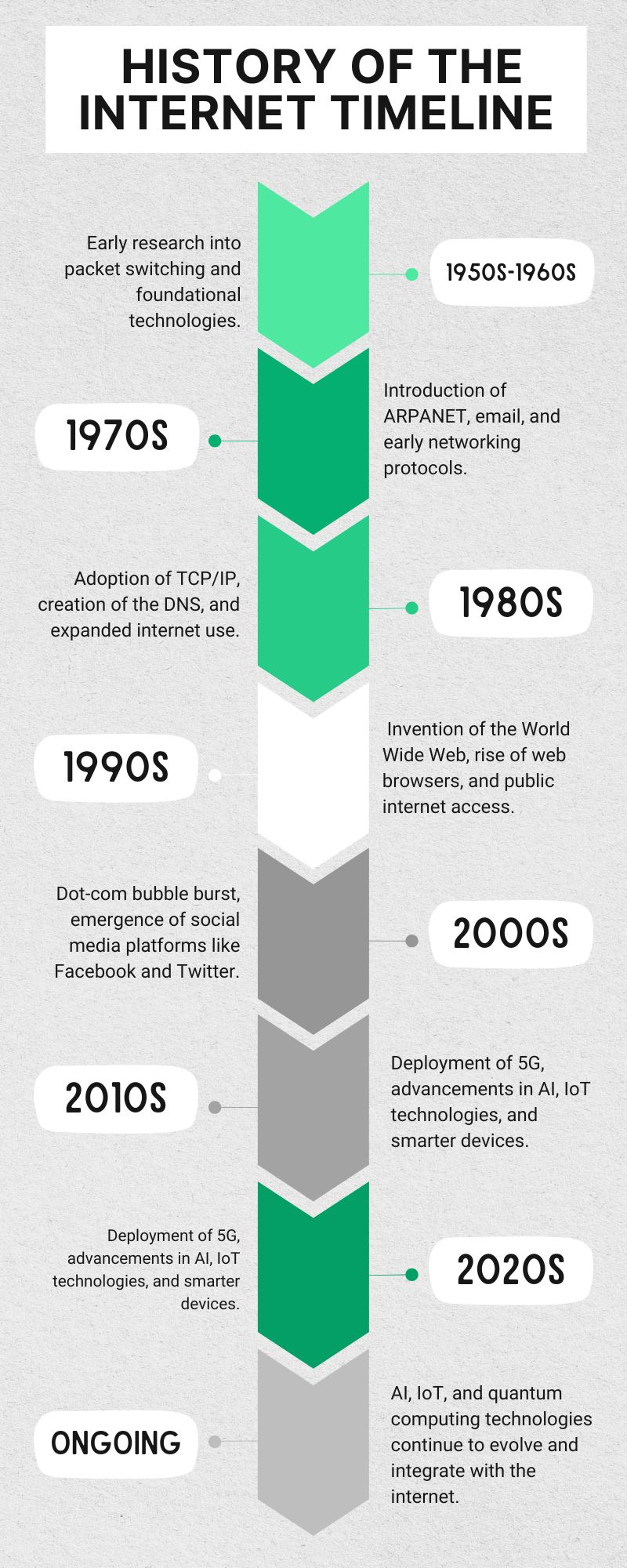
History of The Internet Content Management System (CMS)
Explore the evolution of Content Management Systems (CMS), from early platforms to modern tools that empower users to create and manage digital content with ease.
- 1995: First CMS – WebEdit – Early CMS platforms allowed users to create and edit websites without deep coding knowledge.
- 2000: PHP-Nuke – One of the first open-source CMS platforms, paving the way for user-driven content management.
- 2003: WordPress – Launched as a blogging platform, WordPress quickly became the most popular CMS, powering over 40% of all websites by 2020.
- 2007: Joomla – Another popular open-source CMS, known for its flexibility and extensibility.
- 2010s: Rise of Cloud-Based CMS – Platforms like Wix and Squarespace emerged, offering easy-to-use, drag-and-drop website builders.
- 2020s: Headless CMS – Gained popularity, allowing developers to manage content without being tied to a specific front-end framework.
History of Internet Videos Timeline
Explore the evolution of online video content, from the early days of simple video sharing to the rise of powerful streaming platforms that have transformed entertainment and communication.
- 1991 – The First Web Video: The first video ever uploaded to the web was by Tim Berners-Lee, the inventor of the World Wide Web. The video, a short clip explaining the basics of the web, marked the beginning of multimedia on the internet.
- 1995 – RealPlayer Launch: RealPlayer, one of the first media players capable of streaming audio and video content over the internet, was launched. This marked the start of online streaming, although video quality was very limited due to slow internet speeds.
- 2005 – YouTube is Born: This marks a significant milestone in the evolution of the internet as we know it. YouTube was launched, revolutionizing online video sharing. It allowed users to easily upload, view, and share videos. YouTube quickly became the dominant platform for video content, changing how people consumed media.
- 2007 – The Rise of Streaming – Netflix: Netflix, originally a DVD rental service, introduced its streaming service in 2007. This marked a significant shift towards streaming as a primary method of consuming video content, paving the way for the streaming boom.
- 2010 – Vimeo and High-Quality Video Content: Vimeo began gaining popularity as a platform for high-quality video content. Unlike YouTube, Vimeo attracted a community of filmmakers and creatives who valued its emphasis on video quality and artistic content.
- 2013: -Netflix Originals: Netflix released its first original series, “House of Cards,” setting the stage for streaming platforms to become major producers of original video content. This was a key moment in the shift from traditional TV to online streaming services.
- 2014 – Twitch Takes Off: Twitch, a live streaming platform focused on video gaming, exploded in popularity. It became the go-to platform for gamers to stream live gameplay and interact with audiences in real-time.
- 2015 – Facebook Live and Periscope: Facebook launched Facebook Live, allowing users to broadcast live videos to their followers. Around the same time, Twitter acquired Periscope, another live streaming service. These platforms made live streaming more accessible to the general public.
- 2016 – Instagram and Snapchat Stories: Instagram introduced “Stories,” a feature that allowed users to share short, ephemeral videos. Snapchat had pioneered this concept, and Instagram’s adoption of it made short-form video content even more popular.
- 2017 – YouTube TV and the Cord-Cutting Trend: YouTube launched YouTube TV, a live TV streaming service, further pushing the trend of cord-cutting as more viewers shifted from cable TV to internet-based streaming services.
- 2018 – The Rise of TikTok: TikTok became the leading platform for short-form video content, especially among younger audiences. Its focus on user-generated content, viral trends, and music-driven videos set it apart from other platforms.
- 2020 – The Shift to Virtual Events: The COVID-19 pandemic accelerated the adoption of virtual events and live streaming. Platforms like Zoom and YouTube became central to hosting events, concerts, and conferences online, transforming how people interact and consume video content.
- 2021 – The Popularization of Reels and Short Videos: Instagram launched Reels, its answer to TikTok, focusing on short, engaging videos. YouTube also introduced YouTube Shorts, further cementing the popularity of bite-sized video content.
- 2023 – AI-Generated Video Content: Advances in AI have led to the rise of AI-generated video content, from deepfakes to AI-created short films, marking the beginning of a new era in video production and content creation.
- 2024 – and Beyond: The Future of Internet Videos: Looking ahead, the future of internet videos likely includes more immersive experiences with VR and AR, as well as continued growth in AI-driven content creation and personalized video experiences.
Transformative Future of the Internet
The internet’s future will bring significant changes, reshaping daily life and global economies. Key developments include:
- 5G and 6G Networks: 5G is enhancing connectivity with faster speeds and lower latency, enabling advanced applications like VR, AR, and IoT. 6G, expected around 2030, will offer even greater capabilities, supporting technologies like holographic displays and advanced robotics.
- Internet of Things (IoT) and Smart Cities: IoT will continue to grow, connecting billions of devices to improve industries and urban living through smarter infrastructure and services.
- Quantum Internet: Quantum internet will provide highly secure communication channels, leveraging quantum mechanics to prevent hacking.
- Artificial Intelligence (AI): AI will further personalize online experiences, enhance security, and improve the functionality of virtual assistants and chatbots.
- Digital Privacy and Security: Enhanced AI-driven cybersecurity and blockchain will bolster online privacy and data management.
- Decentralized Web (Web 3.0): A shift towards a decentralized web could give users more control over their data, reducing the dominance of major internet companies.
- Virtual Reality (VR) and Augmented Reality (AR): These immersive technologies will become more prevalent, changing how we interact, shop, and learn online.
- Global Internet Access: Continued efforts to expand internet coverage, like SpaceX’s Starlink, aim to achieve near-global internet access, connecting underserved regions.
Conclusion
It’s pretty amazing, isn’t it? The History of The Internet Timeline shows a journey from a niche tool for researchers to the backbone of our digital lives, and it’s nothing short of revolutionary. And as you’ve seen, it’s not slowing down anytime soon. From the early days of dial-up connections to the lightning-fast speeds and AI-driven experiences we enjoy today, the internet continues to evolve, opening up new possibilities at every turn. So, what’s next? That’s the exciting part—because the future of the internet is still being written, and it’s going to be incredible. Whether you’re a tech enthusiast or just someone who enjoys the convenience of the online world, one thing’s for sure: the internet is here to stay, and the History of The Internet Timeline is a story that will keep growing and evolving with each passing year.

